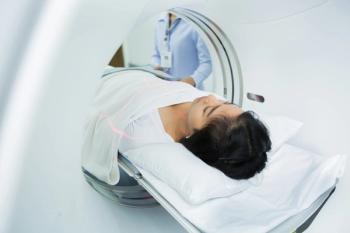
New guideline recommends extending window for stroke thrombolysis
The window for giving tissue plasminogen activator is extended from three hours to four and a half hours after the onset of stroke under new guidelines recommended by the American Stroke Association. Results from two large multicenter trials led the group to advise expanding the time window for tPA delivery.
The window for giving tissue plasminogen activator is extended from three hours to four and a half hours after the onset of stroke under new guidelines recommended by the American Stroke Association. Results from two large multicenter trials led the group to advise expanding the time window for tPA delivery.
The third European Cooperative Acute Stroke Study (ECASS 3) and the Safe Implementation of Thrombolysis in Stroke-International Stroke Treatment Registry (SITS-ISTR) have validated the efficacy of treatment with recombinant tPA up to four and a half hours after stroke onset. ECASS 3 enrolled 821 stroke patients who were randomized for treatment with tPA or a placebo within three to four and a half hours after stroke onset. SITS-ISTR compared 11,865 patients treated with rtPA before the three-hour cutoff with 664 patients who received treatment within three to four and a half hours. Neither study found a statistically significant difference in terms of safety, efficacy, morbidity, or mortality between patients treated up to four and a half hours after stroke compared with those treated under the currently approved three-hour window.
These trials provide the evidence needed to expand the required time for tPA delivery, according to Dr. Gregory J. del Zoppo, chair of the American Heart Association Stroke Council. The council has outlined a new set of guidelines that call for the administration of tPA to eligible patients in the time period of three to four and a half hours after stroke. The recommendation excludes patients aged 80 and older and those with massive stroke. Council members cautioned, however, against misinterpreting trial results as an invitation to delay treatment.
"Although a longer time window for treatment with rtPA has been tested formally, delays in evaluation and initiation of therapy should be avoided, because the opportunity for improvement is greater with earlier treatment," council members wrote in their Science Advisory.
The document appeared June 15 in the online issue of the journal Stroke.
"Those results mean we get some more wiggle room," said Dr. Michael H. Lev, director of the Emergency Neuroradiology and Neurovascular Lab at Massachusetts General Hospital in Boston in an interview with Diagnostic Imaging.
The recommendation also underscores imaging's role for patient selection, Lev said. The criteria for the extended time window remain the same as the old ones, namely no hemorrhage or infarct greater than one third of the total middle cerebral artery territory on unenhanced CT. According to Lev, many emergency stroke centers are adopting the four-and-a-half-hour time window.
The issue remains controversial. After the FDA approved tPA more than a decade ago, the National Institute of Neurological Disorders and Stroke set guidelines for its use on selected patients within three hours of stroke onset. However, only about 4% of stroke patients in the U.S. have made it to the ER in time to get treated. NINDS agrees the condition is treatable beyond the three-hour window and even sponsors research on this area. It has not, however, updated its guidelines to reflect the new stream of thought. The FDA has not yet approved tPA use beyond three hours.
Being able to give intravenous tPA up to four and a half hours after stroke is a good thing for patients, but it should not mitigate the need to do advanced CT and MR imaging or speed up treatment, Lev said. Stroke physicians have to keep in mind that tPA's effectiveness tends to decrease after the first 90 minutes, and the benefit of giving the drug intravenously for an additional hour and a half becomes marginal.
"The extra hour and a half is not buying you a lot," he said. "If you are at a center that can do advanced imaging, clot retrieval, neuroprotection, and intra-arterial thrombolysis, it still behooves you to attempt to do that."
Newsletter
Stay at the forefront of radiology with the Diagnostic Imaging newsletter, delivering the latest news, clinical insights, and imaging advancements for today’s radiologists.



























